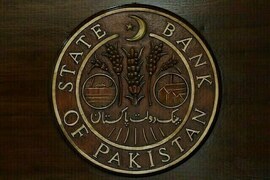 SINGAPORE: Most Asian currencies weakened on Monday as the US dollar firmed after the joint strike on Syrian chemical warfare facilities by the United States, France and Britain went according to plan.
SINGAPORE: Most Asian currencies weakened on Monday as the US dollar firmed after the joint strike on Syrian chemical warfare facilities by the United States, France and Britain went according to plan.
US President Donald Trump's declaration of "mission accomplished" after the strikes convinced market participants that the chances of further military action over Syria's lastest alleged use of chemical weapons were slim.
"For now, last Saturday's air strikes were viewed as a one-off warning," Philip Wee, FX Strategist at DBS Bank, wrote in a client note.
EMini futures for the S&P 500 nudged up about 0.4 percent and Japan's Nikkei added 0.2 percent.
The dollar index against a basket of six major currencies edged up as much as about 0.1 percent to 89.850.
Among Asian currencies, the South Korean won's loss of 0.4 percent made it the region's worst-performing currency.
Earlier on Monday, South Korea's finance minister said he would seek the 'right way' to disclose details of actions taken by currency authorities when intervening in the foreign exchange market.
Meanwhile, the Taiwan dollar was on track to fall for a fourth straight session.
It slipped as much as 0.33 percent, hitting its weakest in more than two months, reflecting its sensitivity to global tensions.
Malaysia's ringgit and the Philippine peso lost about 0.2 percent. The ringgit is also set to end fourth consecutive session weaker.
The Singapore dollar edged down 0.1 percent, in line with the move seen in China's yuan .
China's gross domestic product, industrial output and retail sales data is due on Tuesday.
Thai markets were closed for a holiday.
INDONESIAN RUPIAH
The rupiah recovered some lost ground to weaken 0.15 percent, with Indonesia posting its widest trade surplus in six months in March.
The country's trade surplus of $1.09 billion overwhelmed expectations of a $90 million deficit.
INDIAN RUPEE
India's rupee was among the biggest losers on the day, ahead of wholesale price inflation data for March scheduled for later in the day. Expectations are for the wholesale price index to increase slightly to 2.58 percent in March from February's 2.48 percent, a Reuters poll of analysts found.
The rupee weakened as much as 0.33 percent on Monday.
On Friday, the US Treasury included India in its currency monitoring list, which monitors suspected currency intervention, expanding the list to six countries.
"We do not expect the Indian rupee to appreciate strongly because of this. India has twin current account and fiscal deficits that keep its currency and bond markets vulnerable to rising US rates," wrote Philip Wee.
"If not for the rally in the Indian stock market, the rupee would probably have depreciated more instead of keeping stable around 65 against the US dollar in the past few weeks."
The following table shows rates for Asian currencies against the dollar at 0526 GMT.






















Comments
Comments are closed.